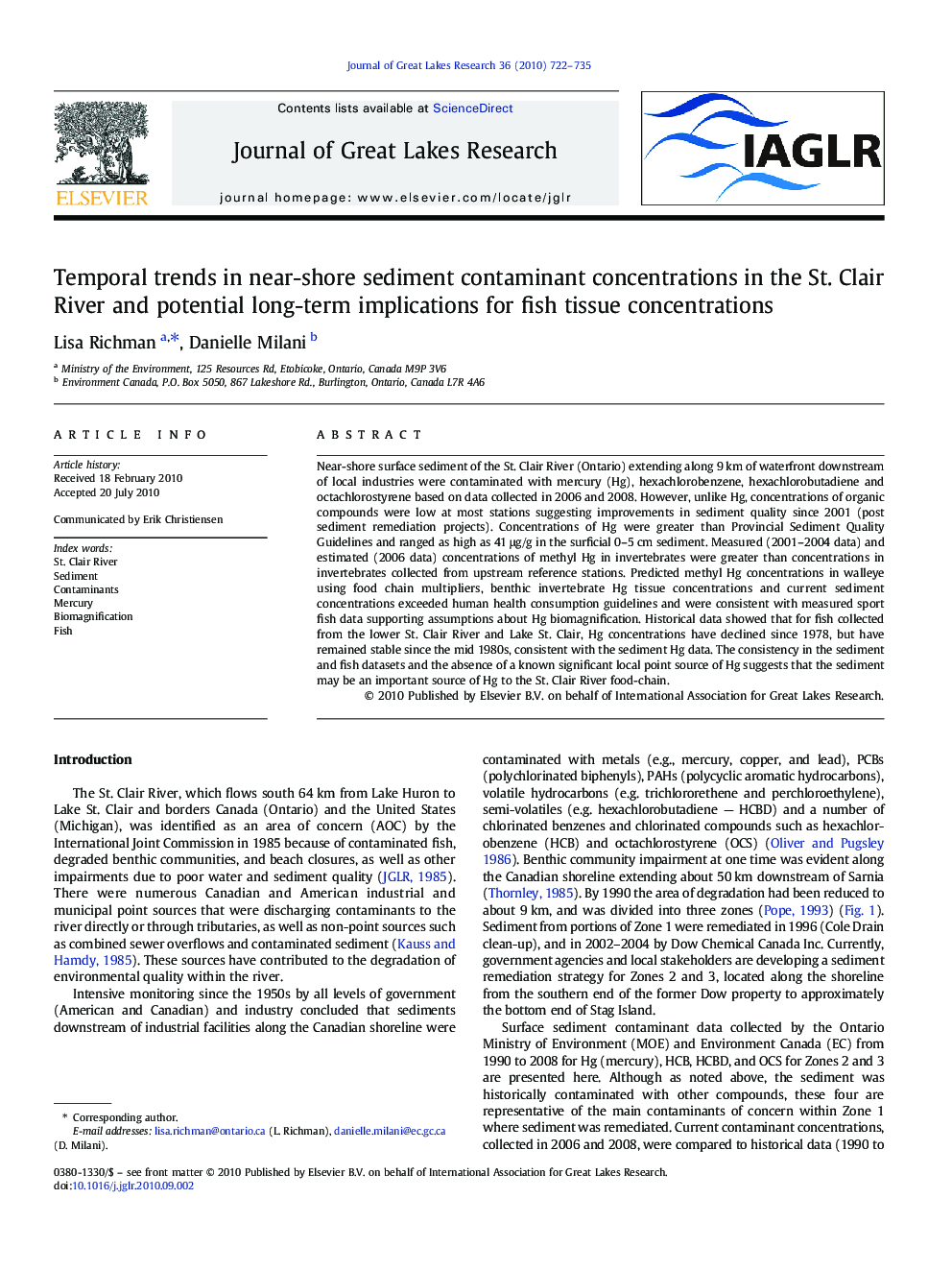| Article ID | Journal | Published Year | Pages | File Type |
|---|---|---|---|---|
| 4398981 | Journal of Great Lakes Research | 2010 | 14 Pages |
Abstract
Near-shore surface sediment of the St. Clair River (Ontario) extending along 9 km of waterfront downstream of local industries were contaminated with mercury (Hg), hexachlorobenzene, hexachlorobutadiene and octachlorostyrene based on data collected in 2006 and 2008. However, unlike Hg, concentrations of organic compounds were low at most stations suggesting improvements in sediment quality since 2001 (post sediment remediation projects). Concentrations of Hg were greater than Provincial Sediment Quality Guidelines and ranged as high as 41 μg/g in the surficial 0-5 cm sediment. Measured (2001-2004 data) and estimated (2006 data) concentrations of methyl Hg in invertebrates were greater than concentrations in invertebrates collected from upstream reference stations. Predicted methyl Hg concentrations in walleye using food chain multipliers, benthic invertebrate Hg tissue concentrations and current sediment concentrations exceeded human health consumption guidelines and were consistent with measured sport fish data supporting assumptions about Hg biomagnification. Historical data showed that for fish collected from the lower St. Clair River and Lake St. Clair, Hg concentrations have declined since 1978, but have remained stable since the mid 1980s, consistent with the sediment Hg data. The consistency in the sediment and fish datasets and the absence of a known significant local point source of Hg suggests that the sediment may be an important source of Hg to the St. Clair River food-chain.
Related Topics
Physical Sciences and Engineering
Earth and Planetary Sciences
Earth and Planetary Sciences (General)
Authors
Lisa Richman, Danielle Milani,
